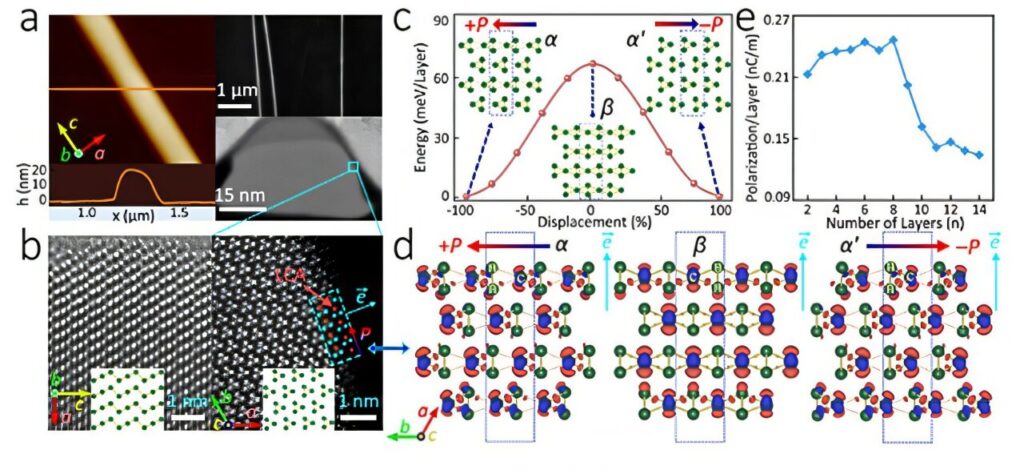A discovery by an international team of scientists has revealed room-temperature ferroelectric and resistive switching behaviors in single-element tellurium (Te) nanowires, paving the way for advancements in ultrahigh-density data storage and neuromorphic computing.
Published in Nature Communications, this research marks the first experimental evidence of ferroelectricity in Te nanowires, a single-element material, which was previously predicted only in theoretical models.
“Ferroelectric materials are substances that can store electrical charge and keep it even when the power is turned off, and their charge can be switched by applying an external electric field—a characteristic essential for non-volatile memory applications,” points out co-corresponding author of the paper Professor Yong P. Chen, a principal investigator at Tohoku University’s Advanced Institute for Materials Research (AIMR) and a professor at Purdue and Aarhus Universities.
While ferroelectricity is common in compounds, single-element materials like Te rarely exhibit this behavior due to their symmetric atomic structures.
However, Chen and his colleagues demonstrated that Te nanowires exhibit robust ferroelectric properties at room temperature, thanks to the unique atomic displacement within their one-dimensional chain structure. The discovery was made using piezoresponse force microscopy (PFM) and high-resolution scanning transmission electron microscopy.
-

Ferroelectric hysteresis and domain switching. Credit: Jinlei Zhang, Jiayong Zhang, Yaping Qi et al.
-

Switching characteristics exhibiting nonvolatile memory of a Te nanowire self-gated ferroelectric field effect transistor (SF-FET). Credit: Jinlei Zhang, Jiayong Zhang, Yaping Qi et al.
Building on this discovery, the team developed a novel device—a self-gated ferroelectric field-effect transistor (SF-FET)—which integrates both ferroelectric and semiconducting properties in a single device. The SF-FET demonstrates exceptional data retention, fast switching speeds of less than 20 nanoseconds, and an impressive storage density exceeding 1.9 terabytes per square centimeter.
“Our breakthrough opens up new opportunities for next-generation memory devices, where Te nanowires’ high mobility and unique electronic properties could help simplify device architectures,” says Yaping Qi, an assistant professor at AIMR and co-first author of the study.
“Our SF-FET device could also play a crucial role in future artificial intelligence systems, enabling neuromorphic computing that mimics human brain function. Additionally, the findings can help lead to lower power consumption in electronic devices, addressing the need for sustainable technology.”
Currently, the team at AIMR, which comprises Qi and Chen, is exploring new 2D, ferroelectric materials using artificial intelligence (AI) techniques, in collaboration with Professor Hao Li’s group. This could lead to the discovery of more materials with promising ferroelectric properties or further applications beyond memory storage, such as neuromorphic computing.


